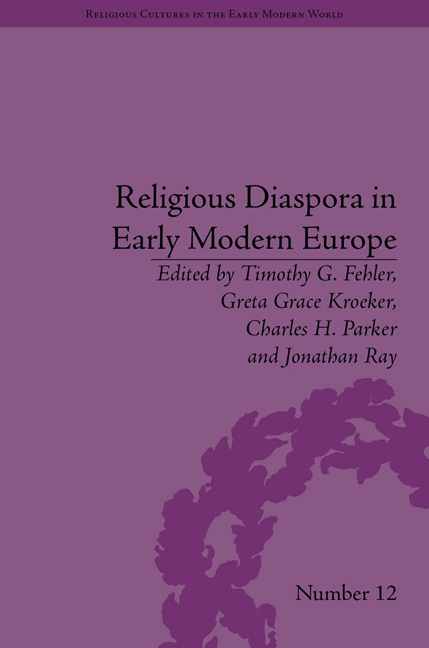Book contents
- Frontmatter
- CONTENTS
- Acknowledgements
- List of Contributors
- List of Figures
- Introduction
- Part I Tactics for Inclusion
- Part II Programmes of Restoration
- Part III Methods of Coping
- 8 Freedom as Exile: Michael Servetus and the Alumbrados
- 9 Coping with Poverty: Dutch Reformed Exiles in Emden, Germany
- 10 Anabaptist Migration to Moravia and the Hutterite Brethren
- 11 Chaos and Community: 1492 and the Formation of the Sephardic Diaspora
- 12 Displaced Intellectuals and Rebuilt Networks: The Protestant Exiles from the Lands of the Bohemian Crown
- Notes
- Index
10 - Anabaptist Migration to Moravia and the Hutterite Brethren
from Part III - Methods of Coping
- Frontmatter
- CONTENTS
- Acknowledgements
- List of Contributors
- List of Figures
- Introduction
- Part I Tactics for Inclusion
- Part II Programmes of Restoration
- Part III Methods of Coping
- 8 Freedom as Exile: Michael Servetus and the Alumbrados
- 9 Coping with Poverty: Dutch Reformed Exiles in Emden, Germany
- 10 Anabaptist Migration to Moravia and the Hutterite Brethren
- 11 Chaos and Community: 1492 and the Formation of the Sephardic Diaspora
- 12 Displaced Intellectuals and Rebuilt Networks: The Protestant Exiles from the Lands of the Bohemian Crown
- Notes
- Index
Summary
Marcantonio Varotta (d. 1568), a Venetian weaver and painter who travelled extensively across Protestant Europe and converted to Anabaptism, visited Moravia, a land propagated as a safe haven for all sectarians. The warm reception of fellow Italians, however, could not mask the harsh rivalry between the various Anabaptist sects, which disagreed on many points since each group had its own specific articles of faith. Once back in Italy, Varotta told the Inquisition in 1567 that he left Moravia troubled by much of what he saw there:
While I was there – almost two months – I saw so many faiths and so many sects, one fighting against the other, another condemning the other. Each of these had its own catechism, and everyone wants to be a minister. One church pulls you this way; another pulls you another way. And everyone wants to be the true church. In the small region of Austerlitz alone, there are thirteen or fourteen sects. Scandalized by so many faiths and sects, I began to consider that these heresies might be false and that the faith of the Roman Church was perhaps the true one.
Although all Reformation-era parties and sects that disapproved of the practice of infant baptism were called Anabaptists, and were considered as being of one party by hostile governments and leading theologians, the ‘Anabaptist’ movement in the sixteenth century never overcame its bitter divisions. Similarly, mutual hostility characterized the relationships between the various religious groups in Moravia.
- Type
- Chapter
- Information
- Religious Diaspora in Early Modern EuropeStrategies of Exile, pp. 137 - 152Publisher: Pickering & ChattoFirst published in: 2014

